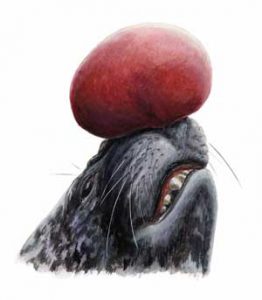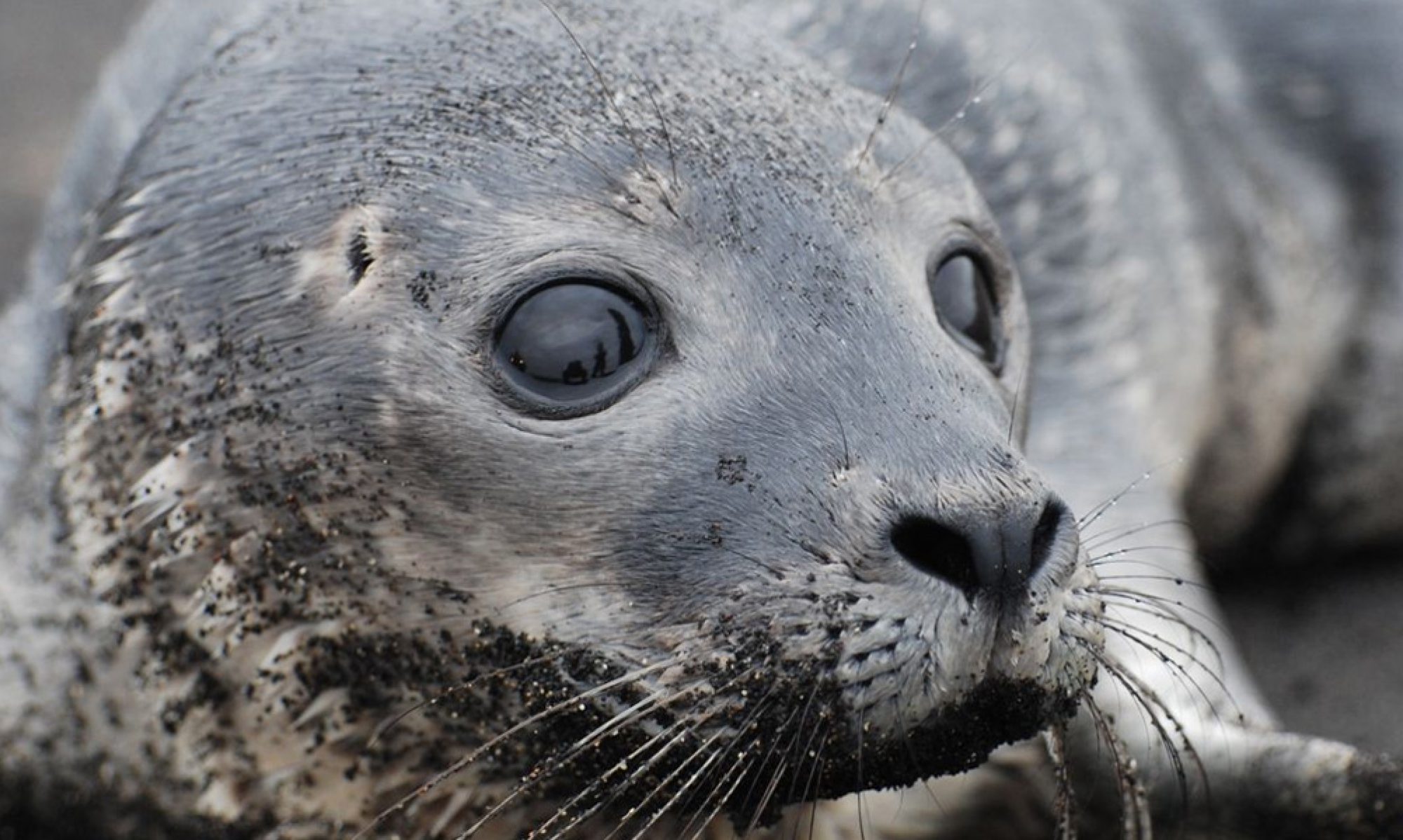
Hooded seal (Cystophora cristata)
The hooded seal was once thought to be rare in Icelandic waters but is now considered to be much more common. This seal usually travels alone and does not go onshore unless it’s ill.
The hooded seal has never been seen in the Húnaflói area, but a few sightings have been reported from the Strandir area of western Iceland. The patched grey colour is similar to that of the grey seal. The name of the species comes from the presence of a bladder on the male’s head. This bladder hangs from between the eyes down to the nose. To impress the females and warn off the competition, males inflate the bladder by closing one nostril and blowing through the other.
In March, the females give birth to one pup, out on the sea ice. They feed the pups milk for almost a week and then they leave the pup to fend for itself. The hooded seal’s main food supply consists of various fish—such as cod and redfish—and shrimp.
In the past, this seal was a common prey for both Norwegians and Canadians, but this sealery has now mostly been stopped. Now, the global hooded seal population is estimated at around 340.000 animals (ICUN).
In Iceland, the hooded seal is mostly spotted along the north coast, but seals marked with satellite transmitters have travelled far south of the island. In the past, the hooded seal—mainly adult males—was hunted along the north coast.

